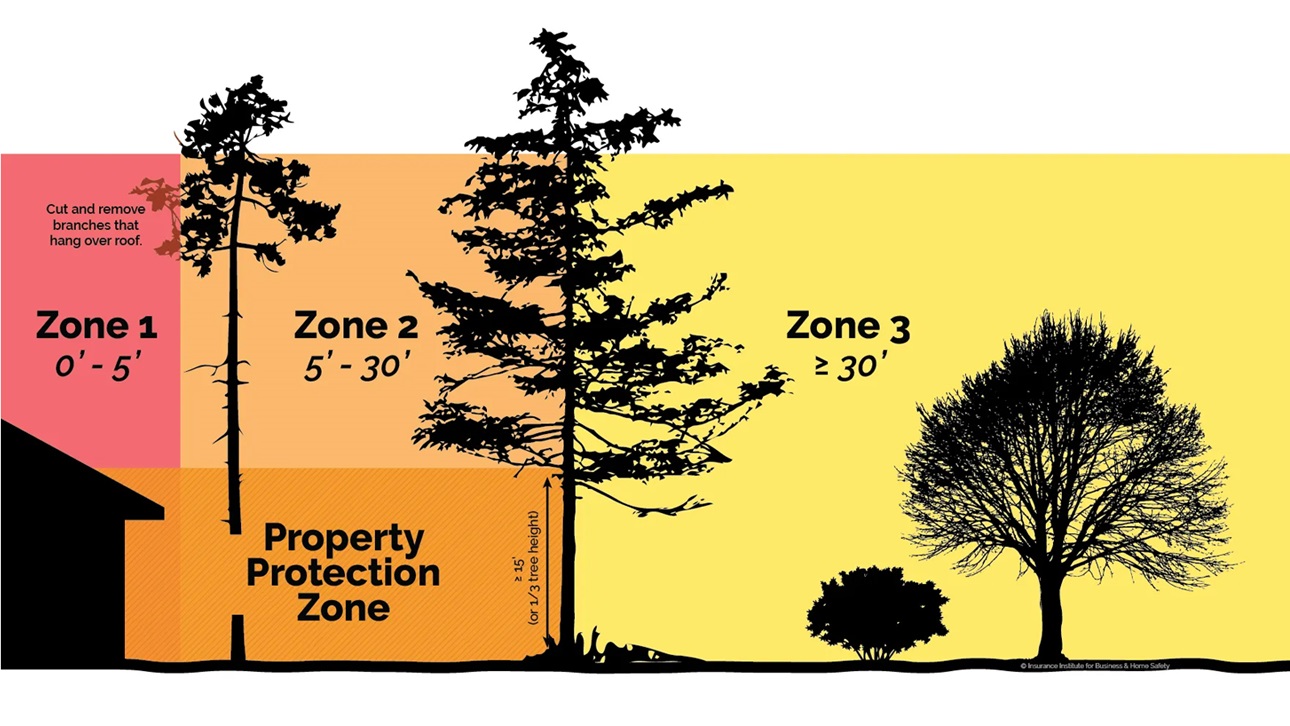2 Key Strategies to Reduce Home Wildfire Risk
All areas of the United States are vulnerable to one or more natural hazards — storms, earthquakes, floods, wildfires — but tend to be at higher risk for one or two. Understanding which hazards are a higher risk in your location is the first step to being prepared; no one ever wants to be out of his or her home because of a natural disaster, especially during this current public health crisis.
Summer is approaching, which is peak wildfire season for some. In addition, some areas of the country are currently experiencing drought conditions, which will increase the risk of wildfire.
There are two main types of strategies builders, remodelers and home owners can employ to minimize potential impact from wildfires:
- Maintaining a defensible space around the home to keep a fire, and
- Selecting building envelope materials and using construction techniques that can make it harder for the home to catch fire.
Defensible space encompasses three zones around the home. The goal of this strategy is to reduce the chance that embers will “jump” to a home and limit the opportunity for a fire to ignite close to the home. Strategically spacing vegetation and maintaining it regularly lessens the chance of exposure to direct flames.

Graphic by disastersafety.org
- Zone 1: 0-5 feet from the building (and under the deck)
Goal: Create a noncombustible zone by using hardscapes and not planting vegetation directly next to the home - Zone 2: 5-30 feet from the building or to the property line
Goal: Locate and maintain vegetation to keep fire from climbing up and reaching the home - Zone 3: 30-100 feet from the building or to the property line
Goal: Strategically locate vegetation to slow down and reduce the energy of the fire.
- Using noncombustible roofing and gutter materials
- Covering walls with fire-resistant materials such as brick, stone or stucco
- Screening attic and underfloor vents to keep embers out but still allow airflow
- Boxing in open eaves to create a soffited eave
- Installing dual- or multi-pane tempered windows with screens
- Encasing stilts so there is no opening below the floor, balcony or deck
- Sealing the garage door with weather stripping to help reduce ember entry
Check out disastersafety.org for additional information on building and maintenance to reduce risk from wildfire. The International Code Council also publishes the International Wildland-Urban Interface Code, which communities desiring to address wildfire risks on a jurisdiction-wide scale can adopt.
To stay current on the high-performance residential building sector, follow NAHB’s Sustainability and Green Building team on Twitter.
Latest from NAHBNow
Dec 23, 2025
The 5 Types of Builders — and the One Built to ProsperMost builders want the same things: predictable profits, less stress, and a business that doesn’t grind them down year after year.
Dec 23, 2025
Lumber Capacity Has Peaked for 2025An annual revision to the Federal Reserve G.17 Industrial Production report shows current sawmill production levels above 2017 by 7.5%, but just 0.3% above 2023 levels.
Latest Economic News
Dec 22, 2025
State-Level Employment Situation: September 2025In September 2025, nonfarm payroll employment was largely unchanged across states on a monthly basis, with a limited number of states seeing statistically significant increases or decreases. This reflects generally stable job counts across states despite broader labor market fluctuations. The data were impacted by collection delays due to the federal government shutdown.
Dec 19, 2025
Existing Home Sales Edge Higher in NovemberExisting home sales rose for the third consecutive month in November as lower mortgage rates continued to boost home sales, according to the National Association of Realtors (NAR). However, the increase remained modest as mortgage rates still stayed above 6% while down from recent highs. The weakening job market also weighed on buyer activity.
Dec 18, 2025
Lumber Capacity Lower Midway Through 2025Sawmill production has remained essentially flat over the past two years, according to the Federal Reserve G.17 Industrial Production report. This most recent data release contained an annual revision, which resulted in higher estimates for both production and capacity in U.S. sawmills.
